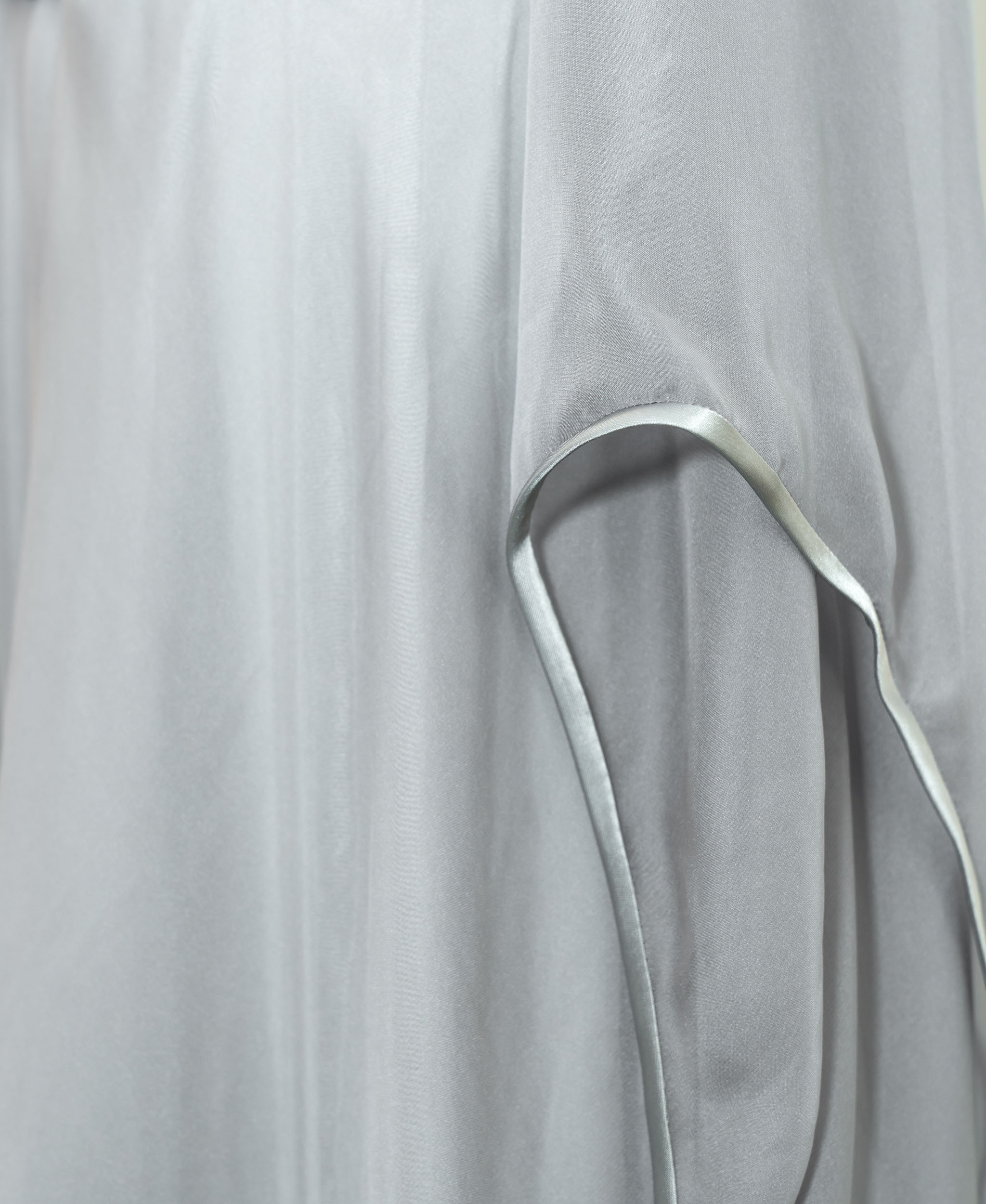My MTP is a Victorian corset and Elvish underdress, with a sage green corset that has black flossing, lace and lacing, with a two piece busk at the front and grommets at the back. The dress is grey chiffon with sheer sleeves and a lined bodice and skirt, which is fitted in the bodice and has a full length quarter circle skirt with fitted bell sleeves. The project has sheer fabric, flossing, Celtic knot applique, lace and bell sleeves contributing to the aesthetics of the design, and a two piece busk, boning, flossing, bound hem, darts, invisible zip and French seams for functionality. My motivation was to create a costume suitable for a cosplay or renaissance fair, inspired by historical Victorian corsets and Elvish style dresses. I addressed these needs by creating historical clothing from a specific time period that focusses on aesthetics. While the costume is not able to be easily cared for or worn in a functional setting, it is suitable for the intended end use. During the process of creating my MTP, I learned many new and historical techniques including the double welt method of joining corset panels, boning and flossing a corset, inserting two piece grommets and a two piece busk, sewing French seams and doing a bound hem. I also modified the pattern for the corset from the Symington 2340 pattern, allowing me to learn how to modify a corset pattern from toiles, as well as self-draft a pattern for the dress using bodice and sleeve blocks. Through practicing the techniques in experiments and toiles, I learnt how to do the required skills with a high degree of accuracy and precision, and also learnt patience for doing repetitive and slow techniques including flossing and hand sewing. The most enjoyable experience was weaving the Celtic applique for the neckline of the dress, as once I was able to create a pattern, it was very satisfying to see the design come together as I continued to add more strands. The greatest challenge of the project was sewing the sheer chiffon and slippery sateen liner for the dress. This was because it was extremely hard to control the sheer and slippery fabrics on the sewing machine, as well as learn new techniques for French seaming it and keep the French seams neat while doing them in complicated spots like around the invisible zipper.


